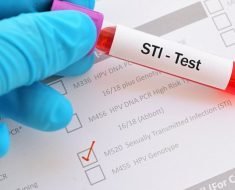During HIMSS webinar on Monday, healthcare leaders from the U.S. and Europe offered up-close looks at how they’re developing and implementing approaches to vaccine credentials.
The session, COVID-19 Vaccination Credentialing: Global Initiatives and Implications, was presented by HIMSS Global Consortium for eHealth Interoperability. It focused on three ongoing projects around the world as “the largest mass vaccination program ever attempted” continues apace.
In an update from the U.S., Dr. Brian Anderson, chief digital health physician at the MITRE Corporation, offered a status report on the Vaccine Credentialing Initiative, which he cofounded. Its membership has increased to some 400 mostly private-sector organizations.
“The main focus when we launched in January was enabling the issuance of these kinds of credentials based on the vaccination administration record itself,” said Anderson.
“And so we focused on the stakeholder engagement with organizations like major electronic health record-technology partners that obviously work very closely with health systems and pharmacies here in the United States. The mass vaccination scenario involves, as an example, those two major stakeholder groups as our society progresses through the vaccination process.”
He noted that it’s “important to describe what VCI is, and what it is not.”
It is a voluntary, pro bono effort, using open source, freely-available standards to enable individuals to have vaccination credentials on their mobile device or a paper-based copy, said Anderson.
It’s not about identity management. “The business logic of whether or not one is safe to enter, the identity management, all of those are out of scope for what the initial focus of VCI is about,” he explained.
“It’s really about aligning around an interoperable set of open source specifications to empower individuals, have access to those credentials.”
With more than 400 organizations from across the private sector now participating (including Cerner, Change Healthcare, Epic, Mayo Clinic, Microsoft, Oracle and Salesforce), VCI is working with mobile devices manufacturers to support its SMART Health Card. It’s an “open-source-based credential on your phone that you can then use with your consent, with a verifier or with a destination as you see fit as an individual who owns that credential.”
The specification “is meant to be used freely by any stakeholder and available and accessible to individuals for free,” said Anderson. “As a VCI member, you commit to being able to make these credentials available at no cost. An individual shouldn’t have to pay for a SMART Health Card, a verifiable record of their vaccination status.
“Because we are open source and we’re working with HL7, we are transparent in how this has gone through and is going through the balloting process,” he added. “Transparency by design is very important.
“Equally important is privacy,” he said. “And so, when we went out to build the data elements that go into the SMART Health Card, we took the approach of having the minimal amount of data. What that really amounts to is the CVX code – which is essentially the manufacturer, and the dose, and the date and who gave it, and your name and your date of birth. And that’s it. There’s no longitudinal records associated with it.”
While many of these certificates will be stored electronically in smartphones and digital wallets, “every member of VCI commits to also making these kinds of credentials available for printing, so that you can have a paper based, machine-readable QR code, if you don’t have a smartphone or a device that can store this electronically,” said Anderson.
“Part of VCI is ensuring that everyone in our society has access to these credentials and not further increasing any kind of digital divide.”
After months of work “we’re very excited about the growing momentum and what is beginning to be a real issuing of these credentials to individuals” at hospitals, clinics and retail pharmacies here in the United States.
“We’re also working with health plans. Insurers here in the U.S. are offering a service to log into their portal, where they have records of these vaccinations,” said Anderson. “And perhaps most importantly, we’re working, the state immunization information systems to be able to transmit copies of those verifiable credentials to individuals.”
The goal of these credentials, of course, is to “enable the safe and rapid reopening of our economies and our society to enable individuals to be able to go to those places that we all want to go to, and to do so in a safe way.”
And so at VCI, “we’re working very closely with many of the major sporting leagues here in the United States – groups like the NBA or others – to ensure that the end-to-end use case is as seamless and as user friendly as possible.
“We’re working closely with other organizations in the travel and tourism industry, as well as looking to work with many of the restaurants and businesses that we all like to frequent,” he said. “Working with the destinations is obviously the linchpin in all of this. At the end of the day, they’re the ones that are going to be consuming these credentials.”
Also speaking during the HIMSS webinar, offering the European perspective, were Clayton Hamilton, coordinator of the Digital Health Division of Country Health Policies and Systems at the WHO Regional Office for Europe; Konstantin Hyppönen, digital health policy officer in DG SANTE of the European Commission; and Ron Roozendaal, director of information policy and CIO at Netherlands’ Ministry of Health, Welfare and Sport.
Anderson said VCI is working to harmonize its U.S.-based efforts with the European Union, the World Health Organization and others internationally.
Twitter: @MikeMiliardHITN
Email the writer: [email protected]
Healthcare IT News is a HIMSS publication.
Source: Read Full Article





